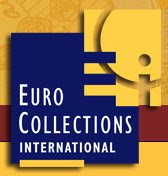For many collectors, the visual appeal of gold coins (See Collecting Gold Coins Part 1) and their affordability will be enough information on which to base a purchasing decision. But sometimes, that decision is more complex because a choice needs to be made between more than one gold coins of equal visual appeal. Choices, choices. Oh, what to do?
Faced with such a dilemma, the collector will then often ask "Which of these gold coins will turn out to be the better investment?" Well, if everybody really knew the ideal answer to that question, we'd all be rich! However, it is a reasonable question and one which does have an answer - in fact, a number of answers if we dissect it a little.

Canada 2008 $350 Purple Saxifrage Gold Proof
The first way to restate the question is "Which coin, over time, will have the greatest value as a collectible, regardless of the gold content?" And the other is "Today, which of these gold coins gives me the most gold for the money I spend?"
The first of these two questions is something the market determines over time and is always a factor of supply and demand. The second, however, is mostly about gold content. It can be answered, and can sometimes help a collector make a choice.
To best illustrate this point and how it can be applied in collecting decisions, let's look at two possible scenarios.
Coin 1
Weight (total weight) = 16 grams
Purity (or fineness) = .999
Price = $300.00
Coin 2
Weight (total weight) = 18 grams
Purity (or fineness) = .917
Price = $300.00
Coin 1 is "three nines" (.999) fine or 24 karat. So in this example the coin offers the collector 0.5 troy ounces of gold (16/32) for $300.00.
In the case of Coin 2, it is .917 fine or 22 karat (22/24=.9167). Such a coin would contain a second metal, or an alloy - usually silver or copper. In this example the pure gold content would be 16.5 grams (18 x .917).
Between these two coins, the better gold buy is, by the slimmest of margins (0.5 grams), Coin 2. This example also serves to illustrate the importance of comparing the pure weight between coins, rather than the gross weight.
Over and above the question of gold content there is another quantifiable element that can be considered, and that is a coin's face value. If, for example, a gold coin has a face value of 150 Euros and contains a half troy ounce of gold, then regardless of what happens to the gold price, the minimum value of that coin is its legal tender value, i.e. 150 Euros. Obviously, if the gold price were to rise above the equivalent of 300 Euros per ounce, then the bullion value of the coin would be greater than its face value, and might also exceed its collector value too.

New Zealand 2008 $10 Sir Edmund Hillary 1/4oz Gold Proof
Another way to look at the difference between a gold coin's price and its bullion value is to regard that difference as the "numismatic premium", which of course represents the cost of making the coin and getting it to the collector. Numerous factors affect this premium. For example, a coin might have a very low mintage. Obviously this tends to increase the price of the coin because the costs of designing striking, packaging and marketing the coin have to be recovered over fewer units. In some cases the premium can be high because the coin has sold out and is increasing in value in the secondary market. Still another factor can be the ever-changing value of world currencies. For example, in 2008 the value of the Euro has climbed some 50% against the US Dollar.
To sum up, when choosing among gold coins of equal visual appeal, the collector can consider the actual cost of the pure gold each coin contains. Sometimes this can help a collector reach a good decision he/she will be happy with.
If you plan to buy a gold coin solely on the basis of its gold content, then you should be considering gold bullion investment coins such as: The Austrian Gold Philharmonic, the US Gold Eagle, the Canadian Maple Leaf, and so on.
In numismatic gold coins, the most important factor is not gold content but rather artistic content, and whether or not the coin you are considering really appeals to you. No matter how great a gold coin may be from a gold content point of view, this won't matter at all if it doesn't provide true collecting enjoyment.
By understanding the factors which can go into such purchases we hope the gold coins you add to your collection bring you enjoyments for many years to come.






1 comment:
Great post about collect gold coins, Rare gold coins in the US were typically manufactured pre-1933 by the US Mint. They were minted at six different US Mints. Some rare gold coins include:
Liberty Rare Gold Coins: Liberty gold coins were minted before the Civil War. The types of Liberty gold coins include:
us mint gold coins
•$20 Liberty 1849-1907
•$10 Liberty 1838-1907
•$5 Liberty 1839-1908
•$2 1/2 Liberty 1840-1907
Post a Comment